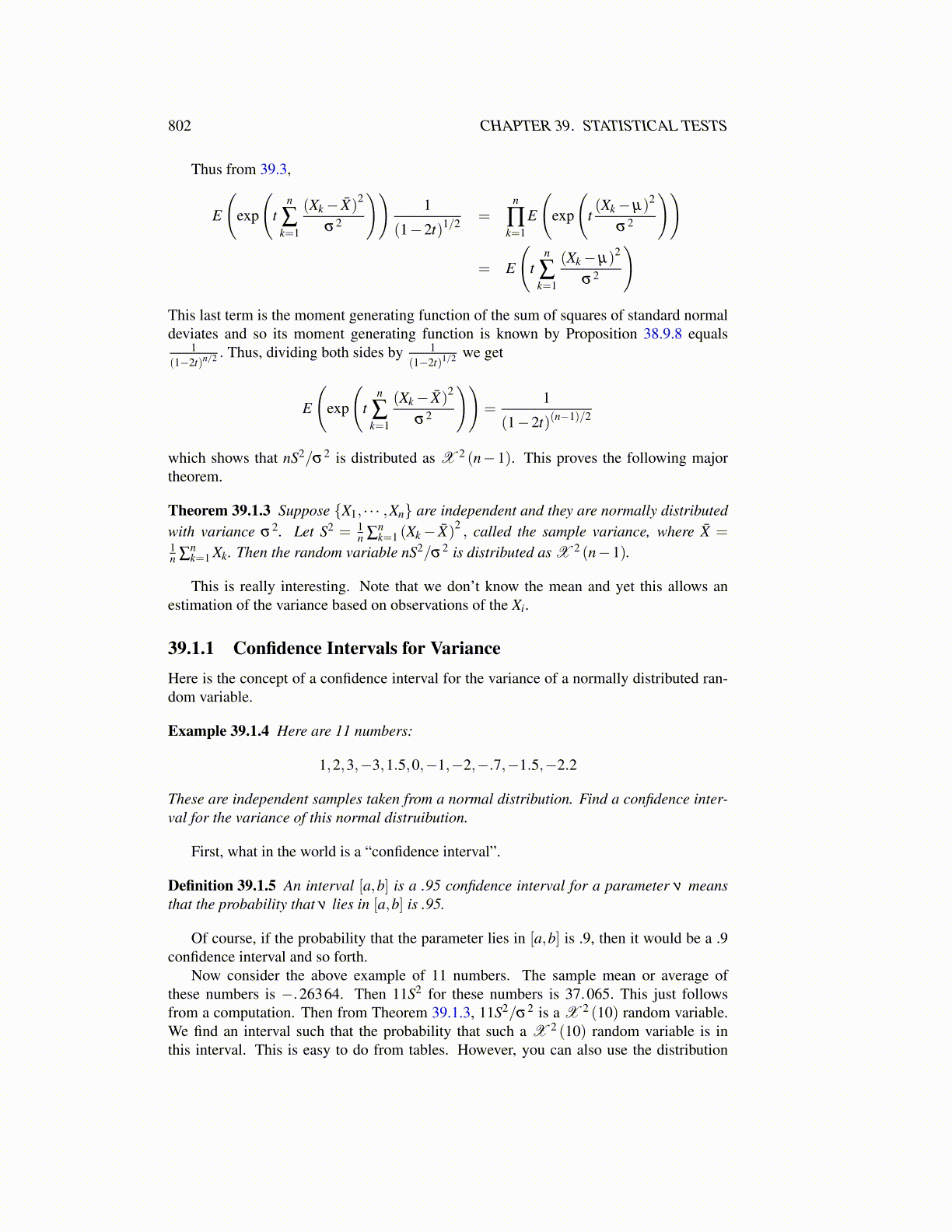
802 CHAPTER 39. STATISTICAL TESTS
Thus from 39.3,
E
(exp
(t
n
∑k=1
(Xk− X̄)2
σ2
))1
(1−2t)1/2 =n
∏k=1
E
(exp
(t(Xk−µ)2
σ2
))
= E
(t
n
∑k=1
(Xk−µ)2
σ2
)
This last term is the moment generating function of the sum of squares of standard normaldeviates and so its moment generating function is known by Proposition 38.9.8 equals
1(1−2t)n/2 . Thus, dividing both sides by 1
(1−2t)1/2 we get
E
(exp
(t
n
∑k=1
(Xk− X̄)2
σ2
))=
1
(1−2t)(n−1)/2
which shows that nS2/σ2 is distributed as X 2 (n−1). This proves the following majortheorem.
Theorem 39.1.3 Suppose {X1, · · · ,Xn} are independent and they are normally distributedwith variance σ2. Let S2 = 1
n ∑nk=1 (Xk− X̄)
2, called the sample variance, where X̄ =
1n ∑
nk=1 Xk. Then the random variable nS2/σ2 is distributed as X 2 (n−1).
This is really interesting. Note that we don’t know the mean and yet this allows anestimation of the variance based on observations of the Xi.
39.1.1 Confidence Intervals for VarianceHere is the concept of a confidence interval for the variance of a normally distributed ran-dom variable.
Example 39.1.4 Here are 11 numbers:
1,2,3,−3,1.5,0,−1,−2,−.7,−1.5,−2.2
These are independent samples taken from a normal distribution. Find a confidence inter-val for the variance of this normal distruibution.
First, what in the world is a “confidence interval”.
Definition 39.1.5 An interval [a,b] is a .95 confidence interval for a parameter ν meansthat the probability that ν lies in [a,b] is .95.
Of course, if the probability that the parameter lies in [a,b] is .9, then it would be a .9confidence interval and so forth.
Now consider the above example of 11 numbers. The sample mean or average ofthese numbers is −.26364. Then 11S2 for these numbers is 37.065. This just followsfrom a computation. Then from Theorem 39.1.3, 11S2/σ2 is a X 2 (10) random variable.We find an interval such that the probability that such a X 2 (10) random variable is inthis interval. This is easy to do from tables. However, you can also use the distribution